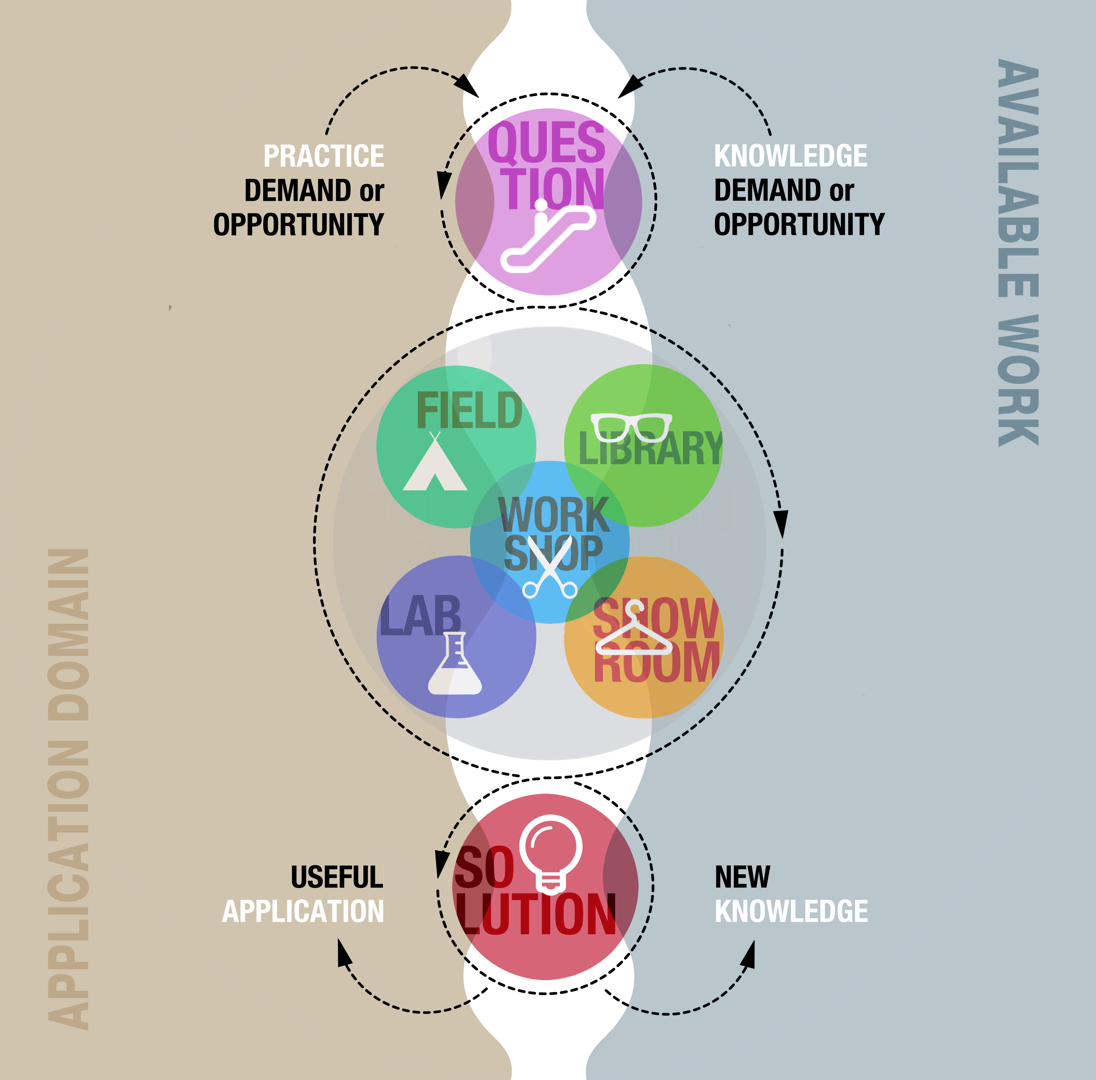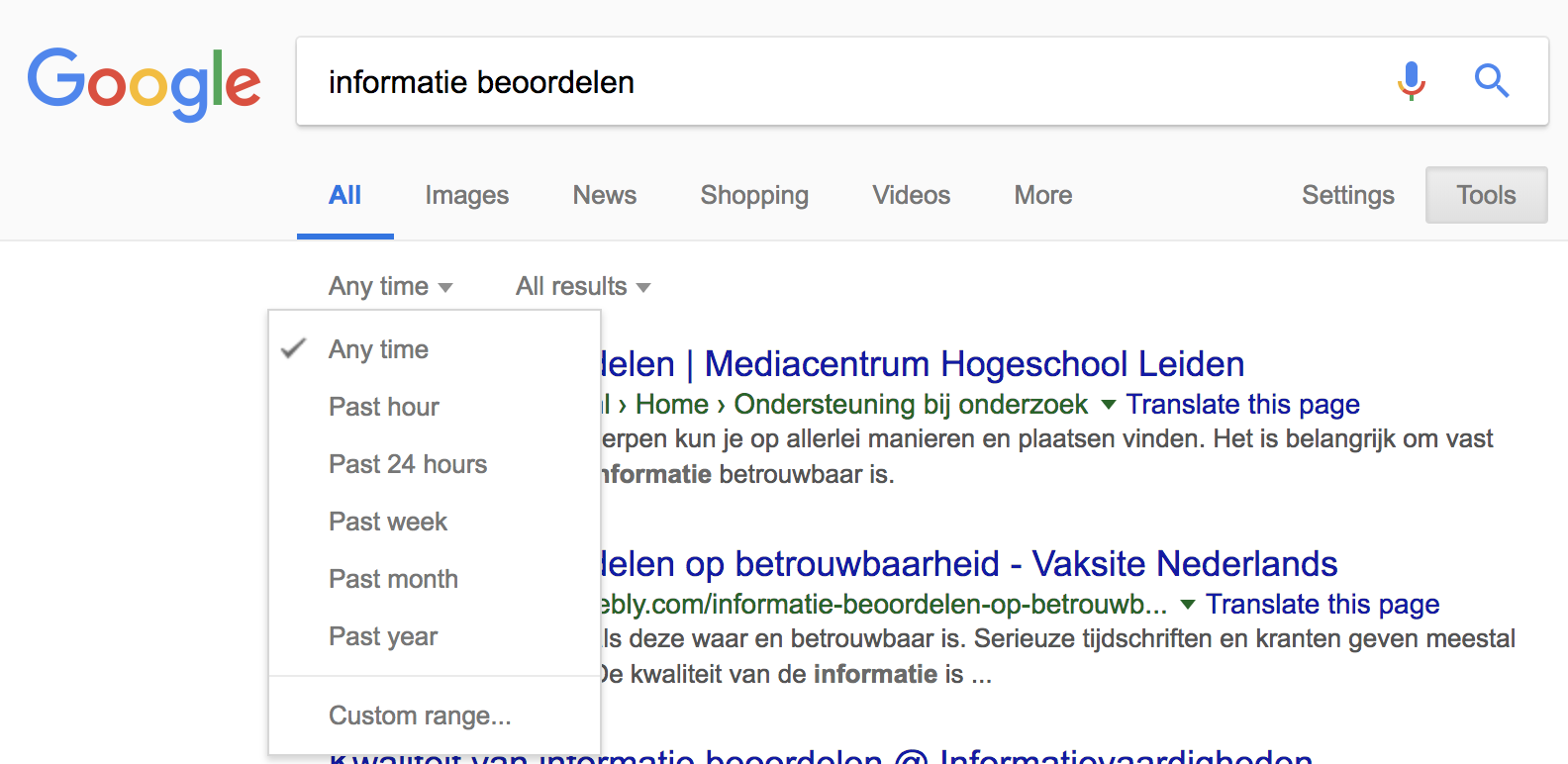Het arrangement 1.1.4 Evaluating information (EN) is gemaakt met Wikiwijs van Kennisnet. Wikiwijs is hét onderwijsplatform waar je leermiddelen zoekt, maakt en deelt.
- Auteur
- Laatst gewijzigd
- 18-09-2020 03:33:14
- Licentie
-
Dit lesmateriaal is gepubliceerd onder de Creative Commons Naamsvermelding 4.0 Internationale licentie. Dit houdt in dat je onder de voorwaarde van naamsvermelding vrij bent om:
- het werk te delen - te kopiëren, te verspreiden en door te geven via elk medium of bestandsformaat
- het werk te bewerken - te remixen, te veranderen en afgeleide werken te maken
- voor alle doeleinden, inclusief commerciële doeleinden.
Meer informatie over de CC Naamsvermelding 4.0 Internationale licentie.
Aanvullende informatie over dit lesmateriaal
Van dit lesmateriaal is de volgende aanvullende informatie beschikbaar:
- Toelichting
- You need information for a variety of reasons. To understand things, to get inspiration for solutions, to know how you to best handle certain tasks, etc. etc. When you have found a source of information, how do you know if you can trust this source? And if this piece of information is really useful for you? This building block is about evaluating information, using the CRAAP test. This is an HBO-ICT building block for Research in Education.
- Leerniveau
- HBO - Bachelor;
- Leerinhoud en doelen
- Informatica;
- Eindgebruiker
- leerling/student
- Moeilijkheidsgraad
- makkelijk
- Studiebelasting
- 2 uur 0 minuten
- Trefwoorden
- applying available work, available work, building block, craap, evaluating information, hbo ict oio, information literacy, library, research, showroom
Bronnen
| Bron | Type |
|---|---|
|
Knowledge clip Introduction CRAAP test https://www.youtube.com/watch?v=cwaVcqeTyhk |
Video |
|
Knowledge clip Currency https://www.youtube.com/watch?v=DXzIgJwE38A |
Video |
|
Knowledge clip Relevance https://www.youtube.com/watch?v=MboAtS7iGGs |
Video |
|
Knowledge clip Authority https://www.youtube.com/watch?v=2RkpAPOkIu0 |
Video |
|
Knowledge clip Accuracy https://www.youtube.com/watch?v=CIRZemlHEb0 |
Video |
|
Knowledge clip Purpose https://www.youtube.com/watch?v=YxBkGvWAxTM |
Video |
Gebruikte Wikiwijs Arrangementen
hbo-ict open-oio. (2018).
Evaluating information




